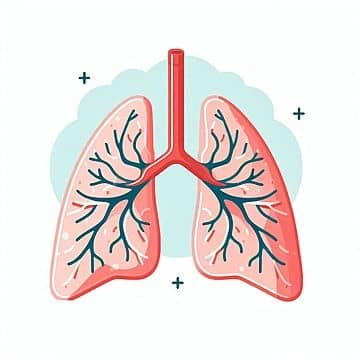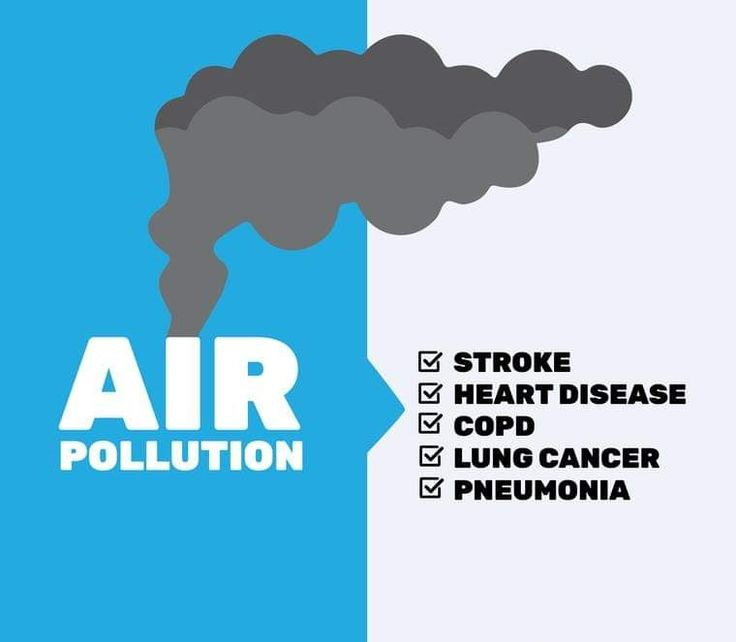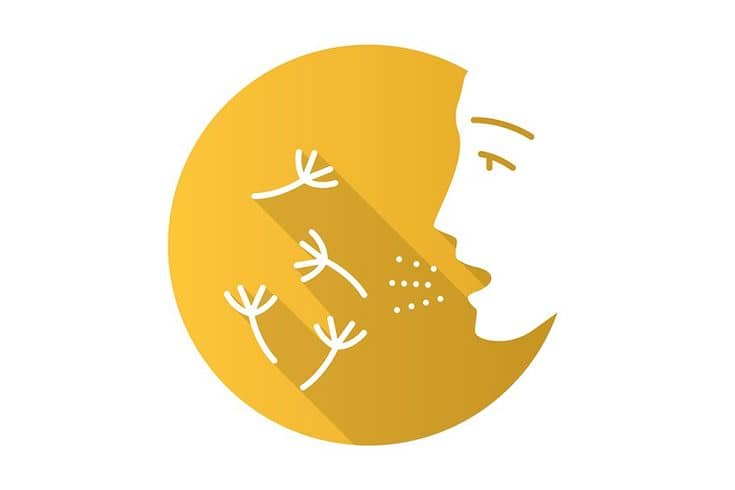Table of Contents
Introduction
Perhaps the most challenging and major question of our time is how does climate change affect respiratory health, implying wide-ranging consequences on human health and well-being.
With the fact that temperatures are increasing and patterns of weather are becoming even more unpredictable, one of the growing concerns involves issues in relation to the health of people’s respiration—not only by healthcare professionals, but of major concern among policy makers.
Climate change-definition and effect on the world:
Climate change refers to the long-term change in the general pattern of weather and temperature of a given region. According to the Intergovernmental Panel on Climate Change Assessment in 2024, Earth was estimated to have already warmed by approximately 1.2°C since the pre-industrial period of time.
This highly attributed increase in temperature has been contributed to by humans through activities such as the emission of greenhouse gases, including carbon dioxide and methane.
Some of the major global impacts of climate change include:
- Sea Level Rise
- Greater frequency and intensity of severe weather
- Changes in precipitation patterns
- Loss of biodiversity
- Effects on Agriculture and Food Security
These changes are serious problems concerning human lungs health, but respiratory health is among the most sensitive parameters related to climatic changes.
Respiratory Health Problems: Concise Summary

The interaction between climate change and respiratory health is complex and multivariable. Therefore, increased temperature and poor air quality will be hallmarked by an increase in vulnerability to exacerbation among people with pre-existing respiratory diseases, and among previously healthy people to develop new respiratory problems.
Climate change causes some of the biggest respiratory health issues:
- Worsening incidence of asthma and allergies
- Define: Exacerbation of chronic obstructive pulmonary disease.
- Increased risk of respiratory infections
- Abnormality of pulmonary functions by pollution
- Increased risk of lung cancer
Therefore, in understanding how does climate change affect respiratory health, one has to put different variables into perspective that, either directly or indirectly,
| Factor | Impacts on Respiratory Health |
| pollui aeris | Greater ozone and particle levels |
| Allergen | Pollen seasons become longer due to higher counts. |
| Harsh weather | Overheating, stress, and exposure to forest fire smoke |
| Vector-transmitted infections | Changes in modes of disease transmission |
For example, on the medical aspect of these changes in climate, children, the elderly, and those with pre-existing conditions of the respiratory system remain highly vulnerable.
It wouldn’t be a finding farfetched to see that in one report in a study to be published in 2024 in the Journal of Climate Change and Health, hospital admission because of respiratory conditions rose 12% during heat waves in urban areas.
The very reason to accelerate searching for solutions is all the dimensions a single issue like this-affecting respiratory health due to climate change-has taken.
There are so many measures which can be adopted toward mitigation of the impact that change in climate may bring on lung health, with the foremost among them being the reduction of greenhouse gas emissions and improvement in air quality monitoring systems.
The sections that follow would involve the effect of climate change on human health, especially on respiratory health, through such causes as air pollution, extreme meteorological events, allergens, amongst others.
Understanding these various ways in which climate influences respiratory health would be a useful aid to prepare for and respond to problems in respiratory health in the context of a changing climate.
1. Impact of Air Pollution: Respiratory Diseases

The complex interaction between climate change and air pollution will be riddled by serious consequences on respiratory health. With global rising temperatures, the formation and persistence of air pollutants will be further triggered, consequently contributing to exacerbating pre-existing respiratory conditions and the development of new ones.
Higher temperatures therefore mean higher levels of ozone.
Thus, smog is a large source of air pollution in which vehicle and industrial emissions mix with sunlight and heat; all this has been exacerbated by climate change.
- increasing average temperature
- making them more frequent.
- Cause stale air conditions.
In fact, one 2024 study in the Journal of Environmental Health estimated that a temperature rise of 1°C has been associated with an increase in ground-level ozone concentrations by about 3-5% on average.
Such an increase in ozone has direct implications for respiratory health because it may:
- Irritate the Airways
- Affect lung function
- Exacerbate asthma and other respiratory diseases
- Increase the risk toward respiratory infections.
Particle Pollution from Wildfires and Dust Storms
Climate change also acts perennially to increase particle pollution much via:
- More frequent and severe wildfires.
- This condition worsens the incidence of dust storms.
The Table shows below that what types of effects on many respiratory health problems particle pollution has.
| Particle Size | Health Implication |
| PM10 (coarse) | Upper respiratory tract irritation |
| PM2.5 (Fine) | Deep lung penetration, cardiovascular problems |
| Background | Probably systemic hypotension, effects on brain |
This exposure to particle pollution is estimated, in a WHO report of 2024, to account for about 4.2 million premature deaths yearly across the world, and a huge fraction of those are due to respiratory diseases.
Knowing how does climate change affect respiratory health is key to the formulation of effective mitigative mechanisms.
The disease burden as a result of poor respiratory health will only continue to rise with temperatures and extreme events.
Again, this underlines the need for urgent comprehensive approaches in order to address climate change and work towards air quality improvement with the view to protecting public health.
2. Extreme Weather and Lung Health

Climate change has directly led to more frequent and intense extreme weather events, which affect respiratory health in at least two distinct ways: the direct effect on lung health and the exacerbation of existing conditions within the respiratory system.
Heat Waves and Their Implications on Air Quality
Heat waves, which are now amplified by climate change, can further deteriorate air quality due to:
- Increasing ground-level ozone formation
- Locally trapping pollutants in still air.
- Enhance the urban heat island
One study, published in the Journal of Climate and Health in 2024, recorded 15% more hospital admissions for respiratory problems during heatwaves compared with normal temperature days.
Flooding and proliferation of mold
Increased rainfall and flooding can, therefore, be attributed to:
- water-related damages to homes and other structures
- Fungal growth in water-impacted areas
- Indoor air pollution increase
| Flood Consequences | Respiratory health effect |
| Breeding moulds | Allergic reactions, Asthma exacerbations |
| Damp | increased susceptibility to respiratory infections |
Appreciating extreme weather and how it is affecting respiratory health due to climate change will better inform adaptation strategies.
Health systems need preparation for the surge in demand during these extremes of weather events, while public health measures would try the protection of vulnerable population from respiratory impacts of extreme weather.
3. Allergens and Respiratory Allergies

With changing climates brought about by global warming, the production of allergens and distribution will also change accordingly. These rising temperatures, along with changing seasons, are forcing plants to change their modes of growth: changing the time for pollen production and distribution.
Larger pollen seasons
The now warming climate will result in:
- Early spring onset
- Delayed first frost
- Longer growing seasons
These are, for certain, lengthening the already long seasons of pollen, extending the exposures to allergens from everything to ragweed to grasses. One estimate was published in 2024 in Nature Climate Change, concluding that since 1990, pollen seasons were getting about 20 days longer in North America
High pollen output
Plants emit more pollen with higher levels of CO2 and warmer temperatures.
| Plant Type | Increase in pollen production |
| Nectar | Up to 90% more pollencoils |
| Birch | 50% Increase |
This speaks volumes about how does climate change affect respiratory health-particularly for those suffering from allergies and asthma.
The American Lung Association did indeed report in 2024 that allergy-related asthma hospitalizations rose 13% over the past decade, paralleling changes in patterns of pollen.
Thus, knowledge of these time trends will position health care providers towards better management of patients with respiratory allergies and asthma since allergen exposure and respiratory health outcomes are influenced by continuous change of climate.
4. Wildfires and the Lungs

Climate change is ushering in a new period of more frequent and increasingly severe wildfires; these are events with huge public health implications. Major emissions of smoke and particulate matter enter large areas, and air quality is consequently debased in these incidents.
More frequent and severe fires
Climate change has brought about:
- Longer fire seasons
- Drier conditions overall in many areas
- Increased frequency of extreme heat waves
According to a 2024 report by The National Interagency Fire Center, the current average number of acres burned is 25% higher per year than the previous.
Long-distance movement of wildfire smoke
Wildfire smoke can travel over hundreds of miles and has even affected air quality across state borders.
|
|
|---|---|
| 0-50 miles | 300-500% |
| 50-200 miles | 100%-200% |
| 200-500 miles | 50-100% |
This is the broad footprint of how does climate change affect respiratory health, not just in the direct places under the fire.
Illnesses resulting from smoke exposure
Wildfire Smoke Inhalation Can Lead To: Aggravating the underlying lung diseases Susceptibility to respiratory infections is increased. “Poor” means overall healthy populations A 2024 “Lancet Planetary Health” published study showed that up to a 10% rise in respiratory hospitalizations due to wildfire smoke exposure during severe fire seasons.
Climate change would make these wildfires more frequent and widespread, so increased frequency and intensity of wildfires, incident control strategy, air quality monitoring, and public health interventions under this possible scenario, warrants the need for increased efforts toward respiratory health.
5. The Built-Up Environment and Global Warming

These make them some of the prime targets for respiratory health in context of raised population density, raised pollutant loading, and the unique microclimates. An interaction of urban environments with climate change has thus created a complex challenge for respiratory health.
Heat Island Effect in Cities
Cities generally have higher temperatures than the countryside because
- Prevalence of heat-absorbing surfaces – asphalt, concrete.
- Vegetation Reduced cover
- Waste heat from transport and buildings
According to one study from a journal, urban heat islands in 2024 could raise temperatures 7°C higher than those compared with the surrounding rural areas and magnify the effect of climate change on respiratory health.
Urban-centric uneven air pollution concentration
Thus, more air pollution may exist in urban settings because of
| Source | Impurities |
| Explanation: | VOC, PM2.5, CO. |
| Industry | SO2, VOCs |
| Building | Particulates, PM10 |
It seems the perfect storm for respiratory problems: in 2024, WHO was reporting that air in cities is laced with pollutants and with 9 out of 10 people breathing in exceeding WHO guideline limits.
Socioeconomic factors affecting vulnerability
Nonetheless, the climate change impact on respiratory health does not affect all urban populations similarly; individual vulnerability will instead depend on income, access to health care, and characteristics of the neighborhood of residence.
Mitigating these inequalities is key to devising proper protection measures for the urban population against respiratory effects of climate change.
6. Policy Recommendations for Mitigation and Adaptation

The mitigation strategies for climate change and adaptive responses to its influences need to be outlined in efforts to try and understand how does climate change affect respiratory health.
These will be the major recommendations supported by existing research and expert opinion.
Reduce greenhouse gas emissions
- Switching to renewable sources of energy.
- Better energy efficiency inside buildings and transport.
- Implement carbon pricing mechanisms
That was from a projection by the International Energy Agency in 2024 for a 45% decline in the world’s CO2 emissions by 2030.
Air Quality Monitoring and Alarm Device Improvement.
| System Component | Function |
| Real-time sensors | Monitoring pollutant levels |
| Predictive Modeling | Air Quality Prediction |
| Alarm systems | Warn vulnerable populations |
The U.S. Environmental Protection Agency’s 2024 AirNow program proved that better information on air quality reduces ER visits for respiratory treatment up to 12% from poor air quality events.
Enhance health and social care access.
- Expand respiratory care by telemedicine service.
- Provide subsidies to air purifiers and face masks for the vulnerable group.
- Allocate increased resources for respiratory health research.
Promoting climate-resilient interventions
- Urban greening should be undertaken to reduce urban heat islands.
- Develop strong building codes.
- Set up community cooling centers during heat waves
In sum, addressing the major approaches to how climate change impacts respiratory health involves working toward the safeguarding of public health against ongoing climate challenges.
You can read this article and get more information about how to keep lungs healthy.
There needs to be emphasis on the fact that such strategies will succeed only with participation at the level of policy makers, health practitioners, and the community.
Conclusion
Thus, the complex relationship between climate change and respiratory health imposes major challenges to public health and healthcare systems worldwide. As observed in this discussion, the varied impacts of climate change on lung health range from multilevel to wide in scope.
Key takeaways include:
- Climate change has already worsened air pollution significantly, increasing respiratory ill health.
- Accordingly, the chance of respiratory diseases goes up.
- Changes in allergen patterns have consequences for allergic and asthmatic individuals.
- Wildfires are an ongoing, growing threat to air quality and lung health.
- Climate-related respiratory problems raise particular dilelemas posed by urban environments.
How does climate change affect respiratory health ceases to be an academic question when one looks at real consequences for millions.
The World Health Organization 2024 report says that factors associated with climate change are expected to cause 250,000 additional deaths annually between 2030 and 2050-a figure in which the majority will fall under respiratory diseases.
To meet such challenges, a multidimensional approach has to be sought:
| Approach | Example |
| Mitigation | Greenhouse gas emission reduction. |
| Mutation | Air Quality Monitoring System Improvements |
| Research | Investigation into climate-resilient intervention in respiratory health |
This would entail the input of policymakers, health professionals, and the community to have enforceable strategies that may save respiratory health from climate change.
This could then be expected to reduce such a burden of disease and result in an improvement in the quality of life among vulnerable populations across the globe.
Reference Material:
https://www.sciencedirect.com/science/article/abs/pii/S0048969723049653
https://www.lung.org/clean-air/climate-change/climate-change-lung-health



